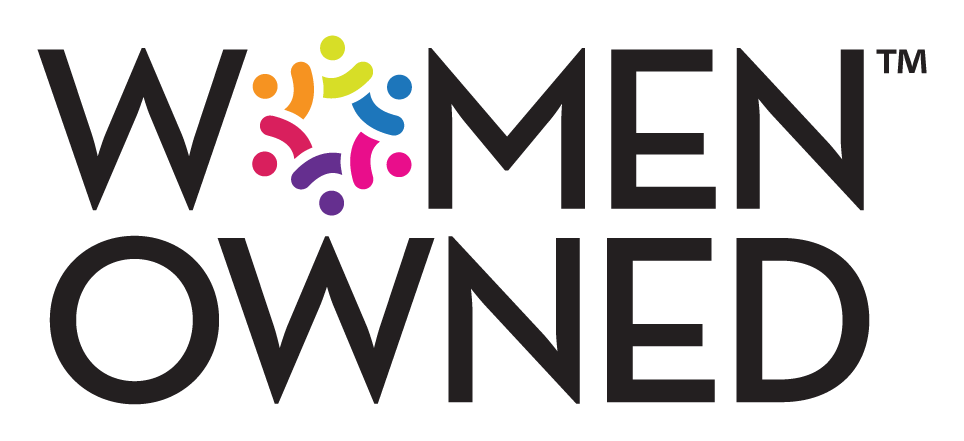Editorial: Let the Game Begin!

? No time to read? Hit play and listen to this blog post in Lauri’s voice.
It may be the most polarizing series on Netflix, but Squid Game quickly surpassed even Bridgerton—and Lupin. Part 1 (from France) and Money Heist (or Casa de Papel, from Spain), before that—as the most-streamed series on the platform, globally. It’s an original Netflix production from South Korea, and I’m willing to bet that most of its gazillion viewers are not consuming the series in its original language. In fact, the show has been translated into more than 30 languages.
I’ll confess: I watched every episode of this disturbing series. And I watched it dubbed in English. That’s the default option Netflix provides for English speakers, in addition to the option of watching the Korean show with English subtitles. Another option is closed captioning (CC), an accessibility measure intended for the deaf and hard of hearing which includes audio descriptions (such as “The phone rings.”). In this instance, the CC text is auto-generated from the dubbed version and isn’t recommended for the general audience.
Subtitling and dubbing are the two primary ways to access content originally produced in a foreign language, and each has its advantages and drawbacks for the viewer. Each approach also requires different work from the translation and production teams. In fact, the same show will have different translations based on whether it’s consumed as dubbed or subtitled.
As you can imagine, while both approaches have their challenges, dubbing is more complex and requires more technical collaboration across production teams. A good dub will layer the language right in, almost seamlessly—and that requires translation + production magic to produce natural-sounding language that also is perfectly timed to sync with the visuals, namely the characters’ mouth movements and facial expressions. And because some languages require more or fewer words to convey the same thing, this is a particularly daunting task for translators as well as those involved in sound mixing and editing. In fact, this is true of both Korean and Spanish—two languages which require more time and length than communicating the same meaning in English.
Subtitling does have its own requirements; it needs to meet time and space constraints (the latter sometimes referred to as “the one-inch-tall barrier”) as well as follow best practices to support the user experience. For instance, the human eye can only read 17 characters per second, so with two rows of on-screen subtitles it is recommended to not exceed 84 total characters at a time. Yet, because the dubbing production method has even greater technical restrictions, subtitling can offer a more production-friendly solve and at the same time a potentially more accurate translation.
I’m typically a fan of subtitles over dubbing, not only because dubbing is less likely to represent the meaning of the original language, but also because it’s nearly impossible to truly reflect the quality of the original production when dubbed. In the case of Squid Game, however, I just didn’t feel like reading. And I was afraid I’d miss something if I was focused on the bottom of the screen.
As I watched the English dubbed version of Squid Game, I became keenly aware of the distraction this approach created. It may have been too big a leap for the team to produce the right sounds in English to mirror mouth movements based on Korean, and the resulting experience didn’t always work for me as a native English speaker. Plenty of TikTok videos further validate my observations!
Beyond my disconnected audiovisual experience, I also wonder whether the meaning of the original Korean had been preserved in this dubbed experience.
FWIW: The show’s creator, Hwang Dong-hyuk, told (what we can assume would be mostly native English-speaking) Good Morning America viewers to watch Squid Game subtitled. Concurring with foreign film purists, the writer/director/producer strongly believes that the viewer has a closer understanding of the content as it was intended when taking in the actors’ true performances.
The primary work of subtitles is to support the action we see on the screen while minding the guardrails. Subtitlers face a special challenge to create a cultural representation of the language, factoring all criteria: time on-screen, the timeline they’re working against, the director’s vision, and likely a combination of these and more.
However, I quickly learned the Internet’s opinion that, if you’re not fully consuming this series in its original language, you’re simply not watching the same show.
As I ventured further down the Internet rabbit hole, I found that many people felt that the subtitles also failed to capture the original meaning, at least in certain instances. Youngmi Mayer, who speaks English and Korean and co-hosts the podcast Feeling Asian, detailed a few of what she considered subtitling gaffes in a TikTok video that’s gone viral.
Examples she gave include the concept of gganbu, a term which is introduced in a tender moment between two of the show’s protagonists. According to Mayer, the term speaks to a special brand of friendship wherein there is no ownership between the two involved. But the viewer reads that gganbu is about sharing everything. It’s not just a different meaning; in context with the scene, it marks a detour in how we perceive what’s happening.
@youngmimayer #squidgame translations are sooo wrong here’s a little example
♬ original sound – youngmi
Let’s be clear: Social media’s treatment of the topic appears to be generated by influencers and other bilingual viewership—and not a peep from the translators who actually completed this work. It would be fascinating to learn of the challenges they faced and the choices they had to make in what must have been a very quick turn to get the show released in the various regions.
Translation, especially for video projects, is a balancing act. Fast-paced timelines combined with character count limitations force the translator to make choices around what will best support the action on-screen without creating unnecessary distractions. And, because it’s generally a very fast-paced and subjective process, occasional translation judgment errors can happen.
Layering on additional complexity, the more culturally loaded the content, the greater the challenge to communicate concepts to another culture. Is it possible to convey all the cultural nuances and context of an actor’s line within 84 characters? Not likely. For people new to Korean culture and cinema, some cultural references will undoubtedly be lost in such a limited space. The task of translation seems doomed from the start—a treacherous game, indeed.
This isn’t to say that the translators on this particular project didn’t get it wrong at times, but we need to call out the myriad challenges that translation assignments can present.
not to sound snobby but i’m fluent in korean and i watched squid game with english subtitles and if you don’t understand korean you didn’t really watch the same show. translation was so bad. the dialogue was written so well and zero of it was preserved
— youngmi mayer (@ymmayer) September 30, 2021
Adding to her thread on Twitter, Mayer later noted that translation work is “not respected…translators are underpaid and overworked and it’s not their fault.” While industry insiders confirm that Netflix is generally considered a respectful player in this regard, Mayer’s comment hits home. When companies—or in this case, streaming platforms or studios—arrange for a translation, many times they don’t do their due diligence to ensure a quality product. If they were to thoughtfully set up the translation work, teams could better accommodate the creative process that takes place during the translation phase; ideally that support would be facilitated from the outset.
As a guest on the translation podcast En Pantuflas, translator-turned-movie director and accessibility expert Pablo Romero Fresco noted that, from his viewpoint, the investment that productions set aside for translation is sadly similar to the budget for the wrap party—that even though up to half of the revenues for a film may be generated from the translated versions, only a fraction of a percent of the budget is devoted to translations. Imagine the squeezed timelines for this work on top of that, with executives eager for global release!
Romero Fresco suggested that, for larger productions, studios should elevate the importance of subtitling, captioning and dubbing by establishing a director of translations role to manage these processes. He also emphasized the value of better translator-director collaboration from the outset to facilitate a smooth process and establish clearer contextual understanding of the content. Romero Fresco has seen that productions in languages other than English are more likely to build in that collaboration, because they recognize how much they count on revenues from their English-language version. He noted one example which modeled this upfront collaboration—and which also happens to be South Korean: Parasite.
Back on Twitter, Jennifer Sano-Franchini, who lists technical communication and Asian American rhetoric in her bio, weighed in on Mayer’s thread that translation is a difficult process—that translators are constantly negotiating between meaning and accuracy, considering how and whether to educate foreign viewers, and factoring in the content’s entertainment value, style and sentiment. Sano-Franchini stressed that this is especially the case with video, as viewers have such little time to understand the meaning of an actor’s line and any cultural interpretation.
It’s also bc translation is a difficult process. Translators are constantly negotiating bt meaning+accuracy (which may require educating foreign viewers) vs. entertainment+style+sentiment—and even more so for TV where viewers have maybe a couple secs to get the meaning of a line.
— Jennifer Sano-Franchini (@jsanofranchini) October 1, 2021
Here is an example of a decision the translator may need to make: In some cultures, it’s perfectly acceptable for a father to kiss his child on the lips rather than on the forehead or cheek. This potential for cultural dissonance creates a decision point: Does the translator favor the source culture that is receptive to this behavior, in the name of preserving that culture? Or, because it may distract or potentially create the wrong kind of buzz, does the translator work to adapt the language for the target culture? And specifically regarding Squid Game, is the goal of the series (or for that matter, the translation) to entertain, or to bring Korean culture to the masses? These are all valid questions in the translator’s mind, and by embracing a more strategic approach, productions can avoid the pitfalls of last-minute decision-making.
All this to say: Translation is hard. It’s a matter of not only adapting meaning and nuance, but with the aim of preserving the spirit of the original work. With a movie or series, several adaptations are created in sequence, involving key decisions and buy-in. The content can begin with a book that is adapted into a screenplay, which is again adapted into a cut based on the director’s vision, with the final adaption being the translation, be it for subtitling or dubbing. Based on my own experience with video adaptation, I imagine the time and attention given to decisions around cultural adaptation and translation pale in comparison with the earlier, higher visibility phases of concepting and adaptation for the original language.
In all this, we’re reminded that good translation is more than rendering a message into another language. It takes a professional translator and true subject matter expert, one who truly understands not only the source culture, but also the target culture, to craft that authentic peek into faraway places we seek when we watch foreign films. Creators must recognize the value of facilitating that all-important cultural understanding and alignment through improved processes with every translation, whether the aim is to educate, connect, influence, sell or entertain. Make the impossible, possible.
The Internet will keep us all honest.









